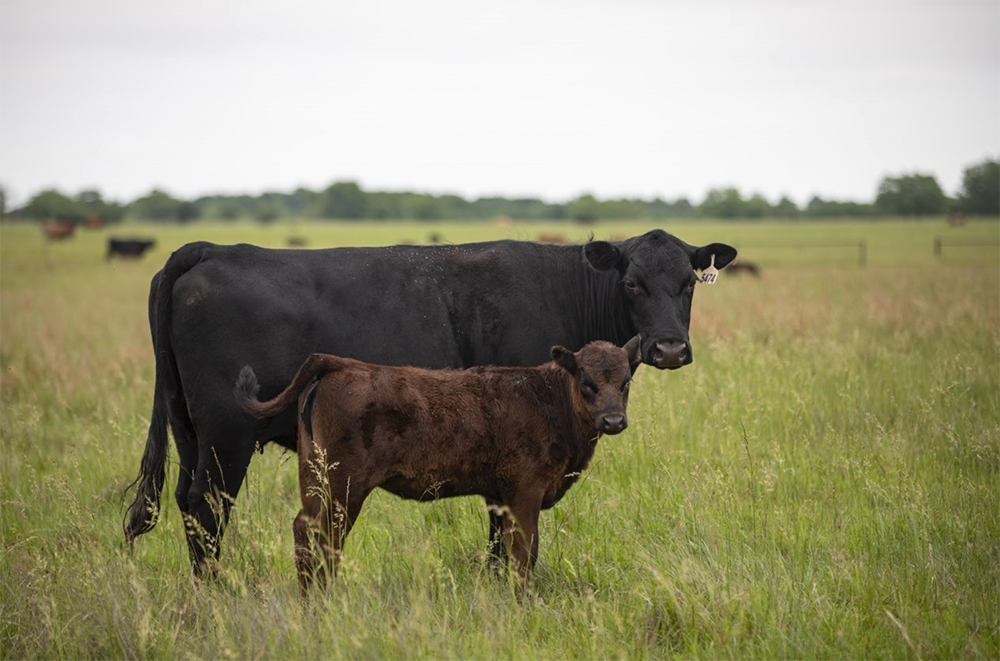
We often hear about issues like mastitis in dairy cows, but what about our beef cattle? That's exactly what Kenley Rogers, our Regional Sales Manager, and Brian Hupp, our National Account Manager, are diving into. They're shining a light on a sneaky problem that's been flying under the radar—mastitis in beef heifers.
Why Mastitis Matters in Beef Heifers
Mastitis, an inflammation of the mammary gland, can occur in beef heifers just as it does in dairy cows. Though less common in beef cattle, its impact can be significant. Kenley expands on the long-term effects of mastitis, "We think about the tissue damage that gets done, you know, to heifers maybe before they even have a calf. We think of that damage down the road, you know, decrease in milk production, blind quarters. It really significantly impacts your operation. I'm weaning weights on calves. You know, if you've got those heifers that aren't making as much milk as they really could have been definitely is a big issue on the beef side too."
Brian Hupp adds that this is an often-overlooked issue. "Mastitis is an issue that we probably don't think a lot about on the beef side of the business. It's not talked about as much, as a dairy business, but it is a, an issue. And it's something that I think producers need to focus on, especially when we talk about rebuilding herds, and we're growing heifers."
Spotting Mastitis Early
When discussing how to spot early mastitis, Hupp states, "I would say the best way to notice or pay attention to if a heifer is dealing with mastitis, you can look right at the teats, and if they're getting those lesions and that scabbing, you know that there's been some attacks from those horn flies there causing that. Typically, it's the front two because that's closest to the belly."
Lesions and scabbing on the teats can indicate horn flies, often targeting the front two teats because they're closest to the belly. Recognizing these signs early can help producers take timely action to mitigate the effects of beef heifer mastitis.
The Role of Fly Control
Horn flies play a significant role in the development of mastitis in beef heifers. Effective fly control is therefore crucial in preventing this condition. Kenley Rogers emphasizes the importance of feed-through fly control methods for pastured cattle, with Altosid® IGR being a highly effective option. By controlling the horn fly population, Altosid® IGR can significantly reduce the incidence of mastitis. Preventative measures like this are essential for maintaining herd health and productivity.
Implementing Altosid® IGR
Using Altosid® IGR in manure is an efficient way to lower the overall fly population. As Brian Hupp notes, this reduces the number of flies on the stomachs and teats of heifers and mama cows, making it an effective first line of defense. Altosid® IGR is recognized as the most efficient way to stop flies in pastures, helping to prevent the onset of mastitis by reducing fly-borne infections.
The Altosid® 90-Day Mineral Trial
To help producers experience the benefits of Altosid® IGR, we offer a 90-day mineral trial. Brian Hupp describes the success of this program, “The Altosid® 90-Day Mineral Trial has been a great program for the last three years, with over 200,000 cows participating across the country. We offer producers who have never used Altosid® on their cattle a 90-day supply for free in exchange for filling out a survey. We've seen an 80% return rate, with producers buying it the following year. This program demonstrates a significant return on investment and has been highly successful.”
Beef heifer mastitis is a hidden challenge that can have significant consequences for beef operations. By focusing on early detection, effective fly control, and leveraging programs like the Altosid® 90-Day Mineral Trial, producers can better manage mastitis and improve their herd's productivity. For more detailed insights and practical advice, watch the video below.
